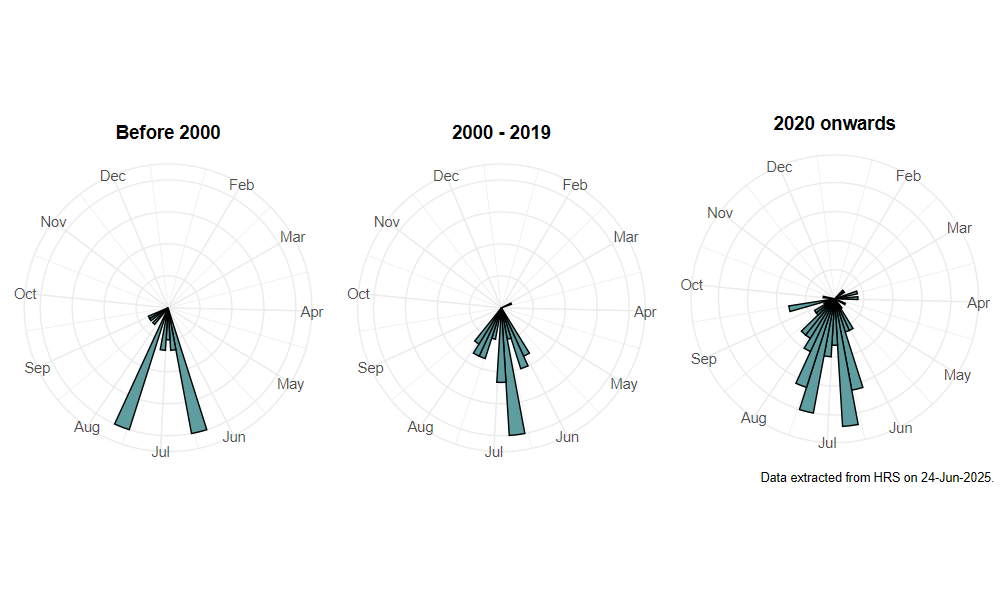Eupeodes lapponicus (Zetterstedt, 1838)
Identification
Identification difficulty = 4. ![]()
![]() according to Ball & Morris, 20241
according to Ball & Morris, 20241
Synonymy
Syrphus lapponicus Zetterstedt in Coe(1953)2, Metasyrphus lapponicus (Zetterstedt) in Stubbs & Falk (1983)3. Lapposyrphus lapponicus in Bot & Van de Meutter (2023)4.
Biology
Although little is known of adult requirements, an association with coniferous woodland is suspected. The larva has been found feeding on aphids at some height on Spruce Picea, and also feeding on Spindle Euonymus europaeus and Oak Quercus sp. Some, but not all British records are from areas of native pinewood, but it has also been found more recently visiting flowers along rides in a conifer plantation (Levy & Levy, 1998)5. There is some evidence that it overwinters as an adult, but over-wintering larvae and puparia have also been found in forest floor litter. The overall picture is very confused at the moment and its status and requirements are very unclear.
Flight period
The following plots show the number of unique records per week excluding those reported to be of immature stages.

Status
Was listed as 'Notable' by Falk, 19916, but dropped from this status by Ball & Morris, 20147 who consider it LOWER RISK and possible a vagrant.
Distribution
There are scattered records from Scotland and southern England and this species is suspected to be an intermittent vagrant. Eupeodes species A sensu Stubbs & Falk (1983)3 & 20023 is very possibly a temperature-related form of E. lapponicus.

-
Ball, S., & Morris, R. (2024). Hoverflies of Britain and Ireland. WILDGuides (3rd ed.). Oxford: Princeton University Press. ↩
-
Coe, R. (1953). Diptera: Syrphidae. Handbooks for the Identification of British Insects, 10(1), 1–98. ↩
-
Stubbs, A., & Falk, S. (1983). British Hoverflies: An Illustrated Identification Guide (1st ed.). Reading: BENHS. ↩ ↩ ↩
-
Bot, S., & van de Meutter, F. (2023). Hoverflies of Britain and North-Western Eupope. Bloomsbury Wildlife. London: Bloomsbury Publishing. ↩
-
Levy, E., & Levy, D. (1998). Somerset hoverflies. Yeovil: E.T. & D.A. Levy. ↩
-
Falk, S. (1991). A review of the scarce and threatened flies of Great Britain. ( No. 39). Research and Survey in Nature Conservation (pp. 1–194). Peterborough: NCC. ↩
-
Ball, S., & Morris, R. (2014). A review of the scarce and threatened flies of Great Britain. Part 6: Syrphidae. ( No. 9). Species status (pp. 1–130). Peterborough: JNCC. ↩